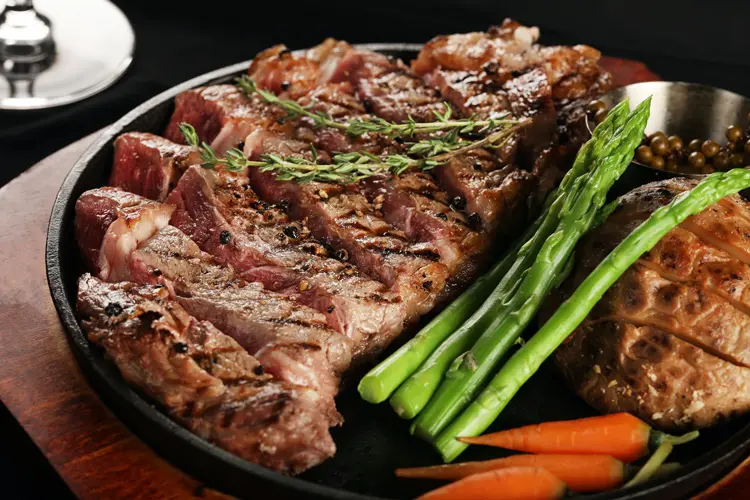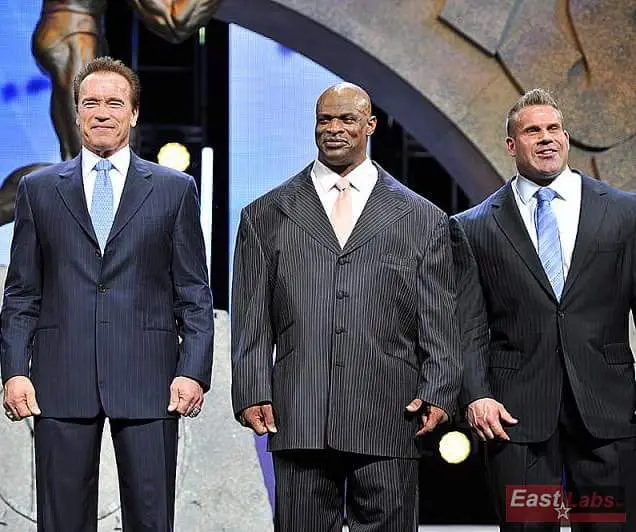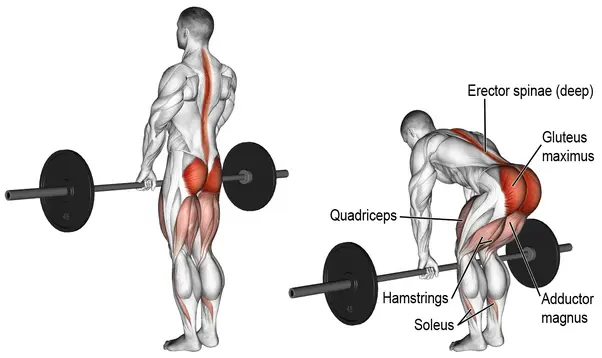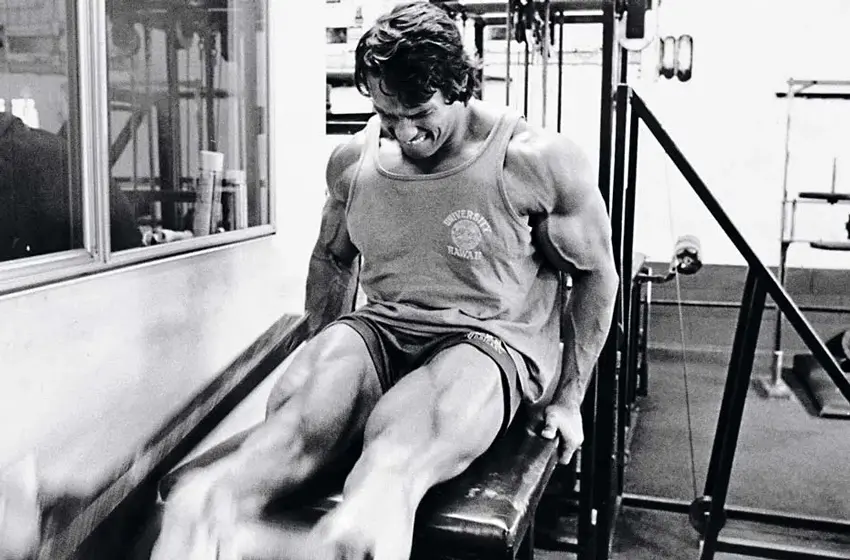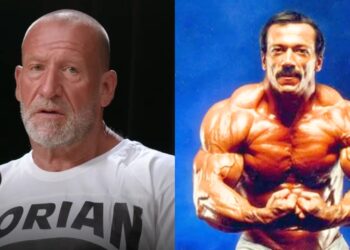Whether your goal is to build muscle, lose fat, or both, it’s never a quick and easy process. But with that being said, utilizing the right strategy can indeed help you to continue making progress at a decent rate. And that’s why today, we’re going to talk about the process of bulking vs. cutting. These are two entirely different methods that have been utilized both separately and together to elicit desirable gains in a reasonable amount of time.
Want to learn how these strategies can help you to make faster gains? We’ve provided the details below in easy-to-understand language.
Gaining and Losing Weight
We promised that we’d make it simple for you to understand and that’s what we’re going to do. But before we explain bulking vs. cutting, you need to understand a few things.
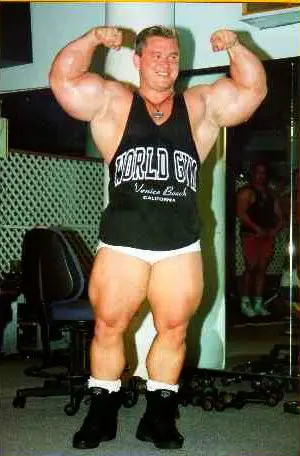
Our body weight is highly influenced by something called basal metabolic rate or metabolism to put it in layman’s terms. Resting metabolic rate (RMR), or REE (resting energy expenditure) also affects body weight. Metabolism function varies between individuals based on several individual factors such as body composition, age, health, genetics, nutrition habits, temperature, and pregnancy.
BMR causes our bodies to use energy or calories to sustain the function of vital organs when the body is at rest, in a neutrally temperate environment, and while not digesting food. RMR refers to energy required at rest to sustain certain functions such as breathing, circulating blood, or basic brain functions.
It’s believed that metabolism function consumes up to 60-75% of total daily caloric intake which is rather significant. Roughly 20% of calories are consumed through activity and 10% via digestion aka thermogenesis.
Level Up Your Fitness: Join our 💪 strong community in Fitness Volt Newsletter. Get daily inspiration, expert-backed workouts, nutrition tips, the latest in strength sports, and the support you need to reach your goals. Subscribe for free!

But again, metabolism varies between individuals hence the reason why some people are able to maintain, lose, or gain weight easier than others. The better someone’s body is able to preserve calories or energy, the more weight they potentially gain and hold onto, and vice versa.
But by implementing lifestyle changes such as getting more exercise to burn calories, eating fewer calories, and reducing stress levels, for example, you can manipulate body composition, which also applies to individuals looking to gain weight/muscle mass.
Want To Start Bulking or Cutting? Use Our Calculators
Because there are so many factors when it comes to changing your body weight including your BMR and TDEE (total daily energy expenditure) that are key variables, you’re better off using our macro calculator to determine BMR and TDEE to find a good baseline to start your fitness journey, that also factors in your daily activity levels and stats (e.g. age, weight).
Figuring your macronutrient intake/ratio is also very important for achieving the desired body composition, and maintaining your health. So might as well kill two birds with one stone here.
If you’re bulking, you can use our weight gain/ bulking calculator.
You must also adopt a fitness regime that is conducive to your goal/s and stick with it as this is how you’re going to achieve your ideal physique. More on this later.
Bulking vs. Cutting
OK, so now that you understand the process of weight gain/loss, let’s talk about bulking vs. cutting.
Bulking
Bulking involves eating more than you normally would or burning fewer calories, to be in a caloric surplus so that your body has an additional material (calories) to create with. This is not required to build muscle as you can gain muscle and lose fat simultaneously, however, if you want to gain muscle faster, bulking is the way to go.
We’re not saying to eat a ridiculously large surplus of calories (don’t do this) but enough to make gains as quickly as you can without gaining an unnecessary amount of body fat.
Typically, the rate of which you gain muscle will depend on your diet, training, lifestyle (e.g. sleep, well-being), and a big part is your genetics. The human body cannot gain lots of muscle in a week’s or month’s time, usually coming at no more than 2-3 pounds per month, and this is the upper end, typically seen in newbie lifters. And again, genetics are big here.
But if you’re taking performance-enhancing drugs, then your rate of muscle gain is going to occur much more rapidly.
A caloric surplus of 10-20% is often an effective approach with a target weight gain of ~0.25-0.5% of body weight/week for novice/intermediate lifters. More advanced lifters need to take a more conservative approach (1).
Bodybuilders are known to bulk up in the offseason to add size quickly, and then they’ll cut before a show to reveal their hard work. Of course, many have chemical assistance too which helps a lot. But it does work for natural lifters as well. In fact, more experienced natural lifters often utilize bulking as near their genetic potential to introduce a stimulus that forces more growth.
The length of a bulk also varies as an enhanced lifter may effectively bulk in 3-4 months whereas a natural lifter will need at least 8-12 months minimum to make significant progress.
Dirty bulking vs. Clean bulking
There are also two common methods used for bulking. One is dirty bulking that involves a more aggressive calorie surplus, and typically, anything goes as far as food choices for a large part of the diet. During a clean bulk, you’d typically eat only a few hundred calories over maintenance (eating enough to maintain your body weight) and follow a healthier meal plan for the majority of the bulk.
The topic of dirty vs. clean bulking is a controversial one, with many people having a different experience with each method. Dirty bulking tends to put on more body fat compared to a clean bulk as caloric intake is much higher (2).
However, there is a lot of real-world evidence that shows more overall muscle gains in a shorter period of time with dirty bulking. On average, most report a few additional pounds of muscle gained with the dirty bulk compared to they do a clean bulk. And I’m talking about experienced lifters with impressive physiques that obviously know what they’re doing, and are consistent. And I’m totally convinced it’s true. But… it’s definitely not for everyone.
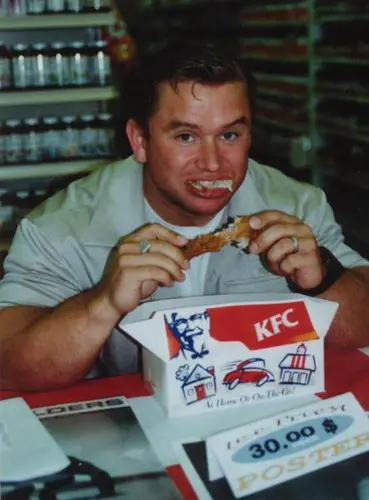
Again, genetics may play a role here, metabolism is a factor, diet, training, etc. Also, not everyone has the discipline to have self-control during a dirty bulk (or even a “clean” bulk for that matter).
For that reason, most people would be better off doing a clean bulk.
Some people permabulk and decide that they never want to shed fat because they enjoy being bigger with more body fat. That’s fine and dandy but not a good idea, especially if you’re continuing to gain body fat, which isn’t healthy or good for your skin. Don’t bulk for life!
Another thing is that people use bulking, whether clean or dirty, to eat any and everything. While having pizza and burger with fries is fine when you need those extra calories, you’re only hurting yourself by pigging out every day. Your health will suffer, you’ll feel like total crap, and those foods are loaded with calories, so you may not realize how much you’re overeating. If you’re not careful, you’ll find yourself way beyond the bulking stage, and on your way to obesity.
You should be eating healthy, calorie-dense foods for the majority of your diet.
We’d also like to mention that bulking with an already high amount of body fat is a terrible idea. If you’re above 20% body fat, it’s time to cut a few pounds and then we can talk about bulking. Many make the mistake of thinking that bulking at a high body fat will get them bigger. And it will as you’ll still gain muscle. But again, you’re setting yourself up for potential failure.
Not to mention, someone who carries a lot of fat could gain more as they cut due to the additional energy stored up as fat. So, you should be slowly cutting while maintaining a high-protein diet and an intense weight training regime.
Now let’s talk about cutting.
Cutting
Cutting involves just the opposite. You’re eating fewer calories, or exercising more so that your body uses up fat stores and doesn’t store calories or energy as body fat. Cutting can more safely and effectively occur at a faster rate than gaining muscle/bulking.
For natural lifters or bodybuilders, it typically takes about four months to effectively cut body fat after a proper bulk. Enhanced lifters can cut much faster. But the more body fat gained during a bulk, the longer it’ll take to cut.
A dirty bulk will add twice as much fat than a clean bulk. But make no mistake, you will gain fat no matter what type of bulk you do.
Typically, it’s advised to lose no more than two pounds of fat per week, This is to prevent losing too much muscle mass while ensuring safe fat loss. There are a few strategies that can use during a cutting cycle which is to either eat fewer calories, do more cardio, or both. Again, this depends on the individual and the various factors that influence one’s ability to lose weight.
Bulking vs. Cutting Nutrition
The nutritional aspect of bulking vs. cutting does not have to be complicated and it shouldn’t be. However, oftentimes, these methods do require a little trial and error, but consistency is what will ultimately determine your progress.
And regardless of what diet you’re following, the foods that you eat do not need to change, only the quantities. Although, there are foods that are obviously more calorically-dense than others. For example, if you’re bulking, you want to eat more or choose more calorically dense foods.
Then, if you’re cutting, you want to eat more low-calorie foods or eat less overall. In this case, you can eat more calorically-dense foods but in smaller quantities.
Protein
But one thing is for sure, sufficient protein intake is a must. Protein is the macronutrient that builds, repairs, and maintains body tissue (e.g. muscle, hair, bone, skin, etc). But it’s also essential for hormones, hemoglobin (carries oxygen throughout the body) production, chemical reactions, enzyme formation, and more.
Here’s a list of 40 Great Protein-Packed Foods.
During a bulking phase, more protein is required to match an appropriate macronutrient ratio in relation to the increased caloric surplus. However, you also need plenty of protein while cutting as losing body fat will also result in some muscle loss. So, you want to preserve as much muscle tissue as you possibly can.
We recommended using our Protein Calculator to determine an appropriate protein intake based on your goals. Although, you can use the macro calculator provided above as well.
Supplementation is also recommended in the form of protein shakes and even protein bars, to ensure you meet your required daily intake. Whey protein powders are excellent because they are convenient and fast-digesting, which means faster protein synthesis (building of proteins). But casein is also good, especially for nighttime nutrition because it’s a slow-release protein that feeds muscles overnight.
Carbs
Carbohydrates are our main energy source and the one macronutrient that can break down quickly enough to sustain high-intensity activities. And when it comes to bulking, carbs are crucial and should make up the majority of calories.

This is to ensure that we have enough energy to weight train, to prevent the body from breaking down protein to be used as energy, and to ensure the body has the raw material that it needs to build muscle tissue.
When cutting, carb intake should be adequate to fuel your training sessions, but ultimately, carb intake is lower. That’s because carbs are energy stored as fat when consumed in excess. Not to mention, carbs absorb a lot of water and can make you look bloated or heavier.
Level Up Your Fitness: Join our 💪 strong community in Fitness Volt Newsletter. Get daily inspiration, expert-backed workouts, nutrition tips, the latest in strength sports, and the support you need to reach your goals. Subscribe for free!
No matter your goal, you want to eat healthy and nutritious carbs such as sweet potato, yams, rice, oats, vegetables, low-glycemic fruits, etc.
Use the macro calculator linked above to determine your ideal carb intake.
Fat
Fat is also a source of energy, secondary to carbohydrates. Because fat contains more calories per gram (9 calories) than either protein or carbs (4 calories each per gram), you want to eat a decent amount of fat when bulking to meet your daily caloric requirements. Although, you don’t want to consume more fat than carbs.
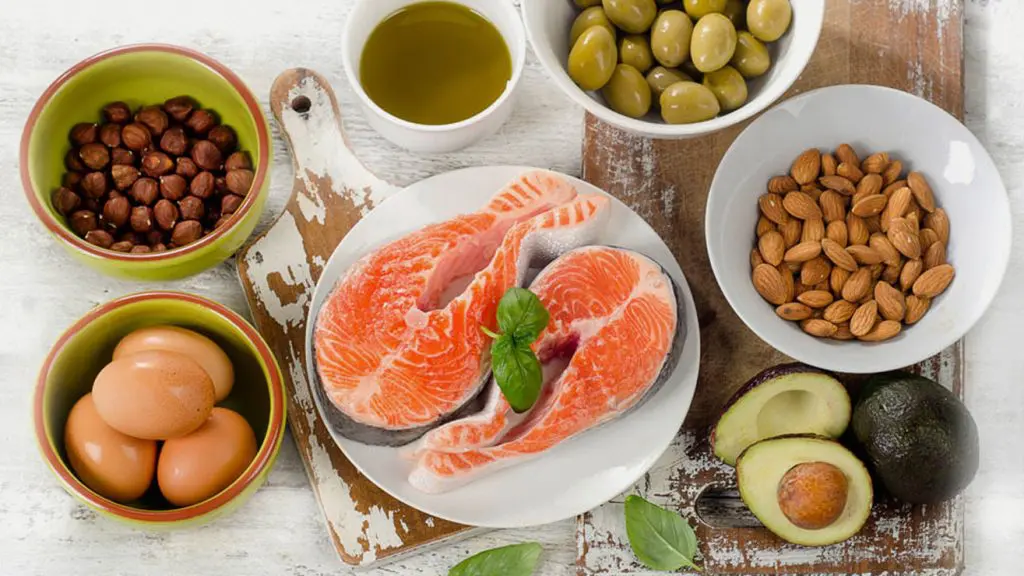
For cutting, fats are going to be essential to maintain energy if carbs are low. But don’t worry, eating fast doesn’t cause fat gain. Eating more than what your body requires for maintenance and not weight training will cause fat gain.
Make sure your fats come from healthy sources such as avocado, nuts, and seeds, healthy oils (coconut, olive, macadamia), eggs, fatty fish, etc.
Pros and Cons to Bulking vs. Cutting
While bulking and cutting have their advantages in that they allow for faster progress and teach you how to manipulate your body composition a little better each time, there are drawbacks as with anything else. Here are the pros and cons of both.
Bulking pros
Gain muscle faster (who doesn’t dream of that), look bigger in clothing (turn heads), eat more tasty foods, condition your body to be bigger, and the list could go on really. One advantage to bulking that most people don’t know about is that when you gain muscle, you create new myonuclei, which are satellite cells in muscle fibers.
These cells allow for more muscle growth, and… research shows that they remain even if you don’t train. This causes “muscle memory” where if you’re detrained and then resume training, you’ll gain the muscle back in less than half the time (3).
However, it is important to note that more research needs to be done regarding myonuclei and muscle memory (4).
It’s also important to note that bulking and holding onto a higher body weight tends to allow for an individual to maintain their weight longer without having to constantly eat. Although, a gradual caloric deficit will cause weight loss. But as long as you’re weight training and eating right, you’ll keep the muscle.
And we cannot forget about the psychological aspect of bulking. It’s a fact that when someone gains size, they get a confidence boost, and when other people take notice, it’s a good feeling!
Bulking cons
The obvious are that you’ll gain body fat (look softer) and will have to cut afterward, you’ll have to eat more and likely more frequently which isn’t always fun, and people might think you’re just getting fat. Although, if you don’t usually care what people think then no worries there.
If you’re not careful and don’t do it right or do it for too long, you could develop unhealthy eating habits, affect your hormones and overall health, and gain new fat cells that do not disappear (although they shrink) during a cut. You don’t want to cause your blood pressure to elevate regularly, and you don’t want to get diabetes from poor dietary habits.
There are a few potentially undesirable drawbacks. That’s why it’s never a good idea to take it to the extreme, and get regular health checkups.
Cutting pros
This is an easy one. Cutting reveals all of the muscle that you’ve been building for months and years. When you cut and have decent muscle underneath, you’ll look more aesthetic. You also don’t have to eat constantly which is almost a relief for those bulking for an extended period of time.
This can be a lot more convenient especially if you have a really busy schedule.
Cutting cons
Cutting body fat and restricting food can affect your hormones (especially bad for women and the menstrual cycle), sleep, mood, metabolism, and it can also cause unhealthy eating habits and body image issues. Not to mention, you’ll be smaller overall even though you’ll look more impressive, and this can really play with your mind.
But that’s why if you’re going to bulk and cut, you need to do it more than once to really gain more size so that you’re a little bigger each time you cut. Or, you can decide not to bulk and cut and gain muscle at a slower rate over time. But take it slow and don’t make it an obsession that interferes with your mental well-being.
Another con of cutting is that you probably won’t be able to enjoy certain foods depending on how low you want your body fat percentage to be. This could be a double-edged sword because, on one hand, you’re watching your diet, but on the other hand, you might have cravings too often.
But typically, a few weeks cutting will diminish strong urges to pig out. Also, you need to choose the right foods to keep you full and substitute some of the more delectable options.
Can Women Bulk and Cut Too?
Absolutely! Women can benefit from these methods too.
It’s important to note that the rate of progress will typically be faster for men on average because of the extra muscle mass and testosterone. Not to mention, the menstrual cycle (period) can be especially frustrating when it comes to weight loss.

But don’t be discouraged because weight gained during this period is not fat unless you’re eating too many calories and not getting enough exercise. The cravings certainly don’t help but that’s why it’s important to develop good habits and prepare your meals and snacks so that you don’t reach for unhealthy, calorie-packed foods.
All of that aside though, women can build lots of muscle and get nice and lean too. Many women bulk and cut for the same reasons that men do whether they compete or just want to lift heavier.
But women do need to be extra careful with their weight decisions and habits because this does affect the menstrual cycle. We’re not implying that men can bulk and cut with no worries though because bulking and cutting can affect both genders (5).
Men have to be careful where it relates to heart health especially.
But weight loss and weight can affect a woman’s menstrual cycle. Women who lose weight too quickly can have missed or irregular periods while excessive weight gain can also experience irregular periods. Women have more body fat on average compared to men for a reason. It’s to ensure the healthy function of several bodily processes and hormone regulation.
How To Train During Bulking and Cutting
Nothing changes regarding the exercises when it comes to bulking and cutting. You should still do squats, deadlifts, rows, bench press, face pulls, and anything else that is going to maximize your efforts. However, during a bulk, eating more calories and increasing your body weight are going to increase your strength. That’s why you see super huge Strongman competitors and powerlifters. They wouldn’t be that strong without all that size.
In contrast, when you start cutting and losing body fat and a little bit of muscle, you’re not going to be able to maintain the same strength, unless you’re enhanced. That’s just the way it is.
That doesn’t mean you’re going to become a weakling but you likely will have to sacrifice just a little strength to be more aesthetic.
Training during a bulk
During a bulk, compound, multi-joint exercises are king because you want to maximize your strength and build as much mass as possible without burning through too many calories. You can still do isolation exercises but make them count.
The squat, deadlift, row, pull-up, and bench and shoulder press need to be your bread and butter. Heavy curls, dips, triceps extensions, and lateral raises to name a few, are great isolation exercises to pack on mass too.
We recommend that you split your workouts and choose two compound exercises per workout. You don’t have to train with maximum poundages every workout but include at least one heavy day for each muscle group.
Vary your rep ranges between workouts, and take your sets to failure. We recommend using the following rep ranges for your workouts.
- 4-6 reps
- 8-12 reps
- 12-15 reps
- 15-20 reps
Your overall training volume will depend on your schedule and commitment. If you can only get to the gym twice per week, do a full-body workout both days, or do upper body one day and then lower body on the other day. With this strategy, you’ll have to structure your workouts so that you’re training each muscle group using heavy resistance, and frequently enough without burning yourself out.
So, you’ll need to alternate heavy and lighter to moderate resistance training for each muscle group, as to not tax your system.
Ideally, you can train 4-5 days per week that way you can split up your muscle groups to give them adequate attention. This also allows you to train heavy without burning yourself out.
A few minutes of cardio each day is good for your heart and overall health, plus it’ll help to increase your appetite which is good for bulking. However, you have to be careful to not burn calories that you’re not prepared to replace.
Training during a cut
Cutting weight can drain some of your energy stores, and that’s why good nutrition to sustain you throughout your workouts is essential. A good complex carb source is recommended to fuel your sessions because you still need to be able to train with intensity to maximize your results.
Fast-paced strength training will burn more fat and you should utilize methods such as HIIT (high-intensity interval training) that increases calorie-burning for hours after, supersets, circuit training, active rest periods, complexes, and more.
You also want to focus on compound movements to maintain strength and build muscle, which also causes the body to burn additional calories throughout the day. Isolation exercises should be utilized as well.
And the good thing about doing cardio during a cut is that you can eat if you’re hungry, as long as you’re willing to put in the work to ensure you still remain in an energy deficit.
Wrapping Up
We hope this article provided you with useful details about bulking vs. cutting. Both are methods that can be used safely and effectively for faster results, but they are absolutely not appropriate for everyone, especially those with health issues or who do not use a safe and effective strategy.
Bulking can work wonders for putting on muscle while cutting is great for revealing your hard-earned muscle. It may take a little trial and error to find what works best for you but we’re confident you have tools to make them work to your advantage.
Have any questions about bulking vs. cutting? Leave them below and we’ll get back to you. Also, be sure to check out our training articles for workout plans, tips, and more.



